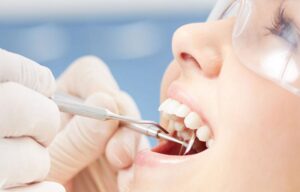The Ultimate Guide to Choosing and Using a Nasal Training Device
8 min read
Key Take a ways:
- Nasal training devices are non-invasive solutions to improve nasal breathing.
- Nasal training devices work by strengthening nasal muscles and improving airflow.
- Benefits of using nasal training devices include improved breathing, reduced snoring, alleviated congestion, improved sleep quality, and enhanced athletic performance.
- When choosing a nasal training device, it’s important to find the correct fit and consider any specific nasal conditions.
- Using nasal training devices properly and consistently, cleaning them regularly, and avoiding common mistakes are essential for effectiveness.
- Combining nasal training devices with other breathing techniques can enhance their benefits.
- Tracking progress and practicing long-term nasal health maintenance are important.
Understanding Nasal Training Devices
Nasal training device has gained popularity in recent years as a non-invasive solution to improve nasal breathing. But what exactly are nasal training devices? These devices are designed to help strengthen and improve the function of the nasal muscles, allowing for better airflow and breathing.
What are Nasal Training Devices?
Nasal training devices, also known as nasal dilators or nasal cones, are small devices that are inserted into the nostrils to expand the nasal passages and improve airflow. They are typically made of soft, flexible materials that conform to the shape of the nose and are comfortable to wear.
There are different types of nasal training devices available on the market, including nasal strips, nasal clips, and nasal balloons. Nasal strips are adhesive strips that are applied externally to the nose and work by lifting and opening the nasal passages. Nasal clips are inserted into the nostrils and act as a physical barrier, preventing the collapse of the nasal passages during breathing. Nasal balloons are inflatable devices that are placed inside the nostrils and are inflated to open up the nasal passages.
How do Nasal Training Devices work?
Nasal training devices work by improving nasal airflow and strengthening the nasal muscles. When the nasal passages are narrowed or blocked, it can lead to difficulty breathing through the nose. Nasal training devices help to open up the nasal passages, allowing for improved airflow and easier breathing.
By regularly using a nasal training device, you can strengthen the nasal muscles and improve their function. This can help in reducing snoring, alleviating congestion, and improving overall nasal health.
The Benefits of Using Nasal Training Devices
There are several benefits of using nasal training devices:
- Improved breathing: Nasal training devices help to open up the nasal passages, allowing for improved airflow and easier breathing through the nose.
- Reduced snoring: Snoring can occur when the flow of air through the nose is restricted. By improving nasal airflow, nasal training devices can help reduce snoring.
- Alleviated congestion: Nasal congestion can be caused by various factors, including allergies, colds, or sinus infections. Nasal training devices help to open up the nasal passages, providing relief from congestion.
- Improved sleep quality: Better nasal breathing can lead to improved sleep quality, as it reduces the need to breathe through the mouth during sleep.
- Enhanced athletic performance: For athletes, nasal training devices can help improve breathing efficiency during physical exertion, leading to enhanced performance.
Choosing the Right Nasal Training Device
Finding the Correct Fit
When choosing a nasal training device, it’s important to find the correct fit. Nasal training devices come in different sizes and shapes, and choosing the right one can make a significant difference in comfort and effectiveness.
It’s recommended to try out different sizes or adjustable devices to find the one that fits your nostrils comfortably without causing discomfort or slipping out. A good fit ensures optimal airflow and improves the overall effectiveness of the device.
Considerations for Different Nasal Conditions
It’s essential to consider any specific nasal conditions or concerns you may have when choosing a nasal training device. Some devices may be more suitable for certain conditions, such as deviated septum or nasal valve collapse.
If you have a deviated septum or a specific nasal condition, it’s advisable to consult a healthcare professional or an otolaryngologist (ear, nose, and throat specialist) to get recommendations on the best type of nasal training device for your needs.
Comparing Different Nasal Training Device Brands
When looking for a nasal training device, it can be helpful to compare different brands and their features. Some factors to consider include the material of the device, ease of cleaning, durability, and customer reviews.
Reading customer reviews and testimonials can provide valuable insights into the effectiveness and comfort of different nasal training devices. It’s also important to check for any warranties or guarantees offered by the manufacturer.
Using Nasal Training Devices Effectively
Proper Technique and Usage Guidelines
To ensure optimal results, it’s important to use nasal training devices correctly and follow the usage guidelines provided by the manufacturer.
Here are some general tips for using nasal training devices effectively:
- Start with clean hands and a clean nasal device.
- Gently insert the nasal training device into your nostrils, following the instructions provided.
- Position the device comfortably in your nostrils, making sure it is secure and properly placed.
- Allow yourself time to adjust to wearing the device. It may feel unusual or uncomfortable at first, but most users adapt quickly.
- Use the nasal training device consistently as directed by the manufacturer. Results may take time, so be patient and persistent.
- Regularly clean the nasal training device according to the manufacturer’s instructions to maintain hygiene and prolong its lifespan.
Common Mistakes to Avoid
When using nasal training devices, there are some common mistakes to avoid:
- Using the wrong size or poorly fitting device.
- Inserting the device too forcefully, causing discomfort or injury.
- Not cleaning the device regularly, which can lead to hygiene issues and potential infections.
- Expecting immediate results. Nasal training is a gradual process, and it may take time to experience significant improvements.
Creating a Nasal Training Routine
To maximize the benefits of nasal training devices, it can be helpful to incorporate them into a nasal training routine.
A nasal training routine can include wearing the device for a certain duration each day or using it during specific activities, such as exercise or sleep. Consistency is key, so find a routine that works for you and stick to it.
It’s important to note that nasal training devices are not meant to be worn continuously. It’s recommended to follow the usage guidelines provided by the manufacturer to prevent any discomfort or potential side effects.
Maximizing the Benefits of Nasal Training Devices
Combining Nasal Training with Other Breathing Techniques
While nasal training devices can be effective on their own, combining them with other breathing techniques can further enhance their benefits.
Breathing exercises, such as deep breathing, diaphragmatic breathing, and alternate nostril breathing, can help improve overall respiratory function and complement the effects of nasal training devices.
Practicing these breathing techniques regularly can strengthen the respiratory muscles and promote better breathing habits.
Tracking Progress and Results
Keeping track of your progress and results can help you stay motivated and monitor any improvements in nasal breathing.
You can keep a journal or use a mobile app to record your usage of nasal training devices, any changes in symptoms or nasal congestion, and how you feel overall. This can provide valuable insights into the effectiveness of the device and help identify any patterns or adjustments that may be needed.
Tips for Long-Term Nasal Health and Maintenance
In addition to using nasal training devices, there are some general tips for maintaining long-term nasal health:
- Keep the nasal passages hydrated by using saline nasal sprays or rinses.
- Avoid irritants such as smoke, strong chemical odors, or allergens that can trigger nasal congestion or inflammation.
- Practice good hygiene by regularly washing your hands and avoiding touching your face, especially the nose area.
- Consider using a humidifier in dry environments to prevent nasal dryness and congestion.
- Stay hydrated by drinking enough water, as dehydration can contribute to nasal dryness and congestion.
Remember to consult a healthcare professional if you have any concerns about your nasal health or if symptoms persist.
By understanding nasal training devices, choosing the right device for your needs, using it effectively, and maximizing its benefits, you can improve your nasal breathing and overall respiratory health. Incorporating nasal training devices into a comprehensive nasal care routine can lead to long-term benefits and a better quality of life.
FAQ
Question: What are nasal training devices? – Nasal training devices, also known as nasal dilators or nasal cones, are small devices that are inserted into the nostrils to expand the nasal passages and improve airflow.
Question: How do nasal training devices work? – Nasal training devices work by improving nasal airflow and strengthening the nasal muscles. They open up the nasal passages, allowing for improved airflow and easier breathing. Regular use of nasal training devices can help reduce snoring, alleviate congestion, and improve overall nasal health.
Question: What are the benefits of using nasal training devices? – There are several benefits of using nasal training devices. They include improved breathing, reduced snoring, alleviated congestion, improved sleep quality, and enhanced athletic performance.
Question: How do I choose the right nasal training device? – When choosing a nasal training device, it’s important to find the correct fit and consider any specific nasal conditions. Try out different sizes or adjustable devices to find one that fits your nostrils comfortably. If you have a specific nasal condition, consult a healthcare professional for recommendations.
Question: How do I use nasal training devices effectively? – To use nasal training devices effectively, start with clean hands and a clean device. Gently insert the device into your nostrils, following the instructions provided. Position it comfortably and allow yourself time to adjust. Use the device consistently as directed, clean it regularly, and avoid common mistakes like using the wrong size or not cleaning it regularly.
Question: Can I combine nasal training with other breathing techniques? – Yes, combining nasal training devices with other breathing techniques, such as deep breathing or alternate nostril breathing, can enhance their benefits. These techniques can strengthen respiratory muscles and promote better breathing habits.
Question: How can I track progress and results? – Keeping track of your usage of nasal training devices, any changes in symptoms or congestion, and overall how you feel can help monitor progress. Use a journal or a mobile app to record these details and identify patterns or adjustments that may be needed.
Question: What are some tips for long-term nasal health and maintenance? – In addition to using nasal training devices, practice good nasal hygiene by keeping the nasal passages hydrated, avoiding irritants, practicing good overall hygiene, considering a humidifier in dry environments, and staying hydrated. Consult a healthcare professional if you have concerns or if symptoms persist.





